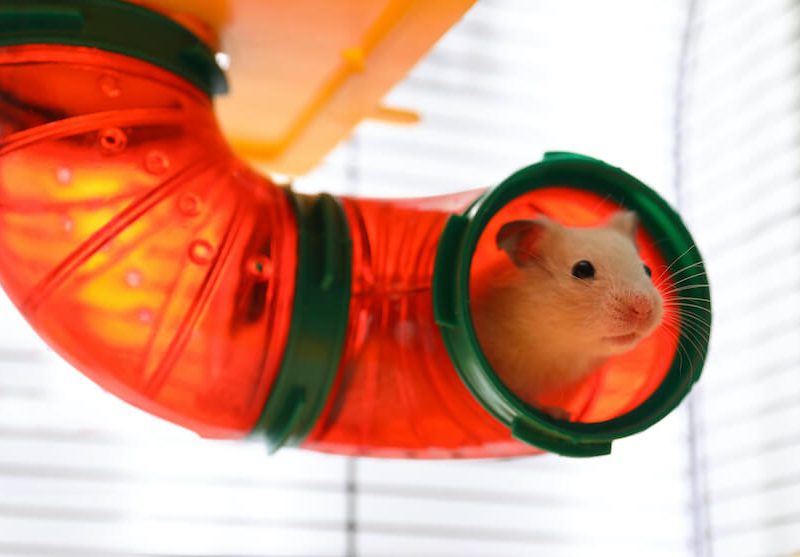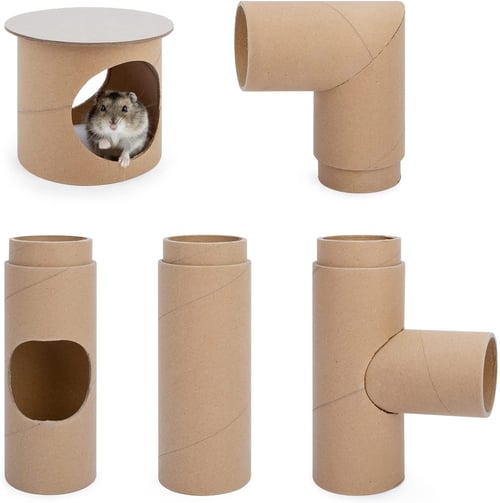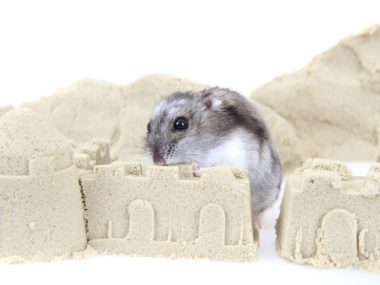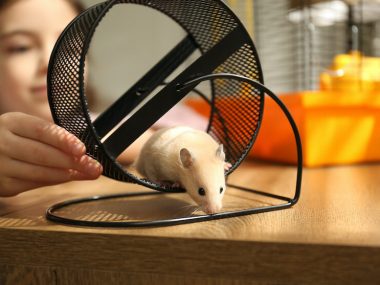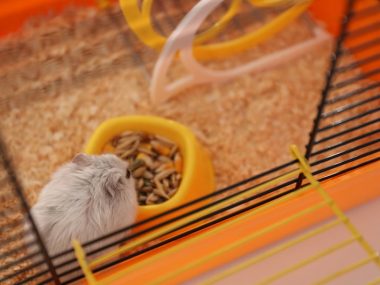Move over paper towel roll tubes because there’s a whole new hamster playpark design! Who would ever have imagined just a few decades ago that hamster tunnel systems would ignite into an obsession among hamster parents? We have a few that may shock you after seeing them!
Disclosure: We may earn commissions for purchases made through links in this post.
Table of Contents
What Is A Hamster Tube?
The hamster tube (also known as a tunnel) is just what the name suggests — a tube for a hamster to traverse through. A series of tubes are interconnected to form vertical and horizontal highways for hamsters to explore. The confines of a tube/tunnel system keep the hamster safe and allow it to expand its horizon past the four walls of its cage.
Are Tubes Good For Hamsters?
Hamster tubes/tunnel systems have advantages and disadvantages. Many will be quick to claim tubes provide enrichment for hamsters, while others say they are dangerous and should not be used.
Hamster tubes can be a positive activity for your hammie, providing “tube time” is always supervised. Responsible hamster moms and dads ensure that their hamster is able to freely move through the tubes and not get stuck. Additionally, a hamster should never be allowed to sleep inside a tube. For this reason, there are hamster layover cage stations that can be built at intervals where one can take a nice nap, get a drink, or get something to eat.
Your average hamster parent does not have elaborate tube systems that would require these layover stations. Whether you do or don’t have one of these, it’s best to keep your hamster moving through the tubes rather than napping inside of one.
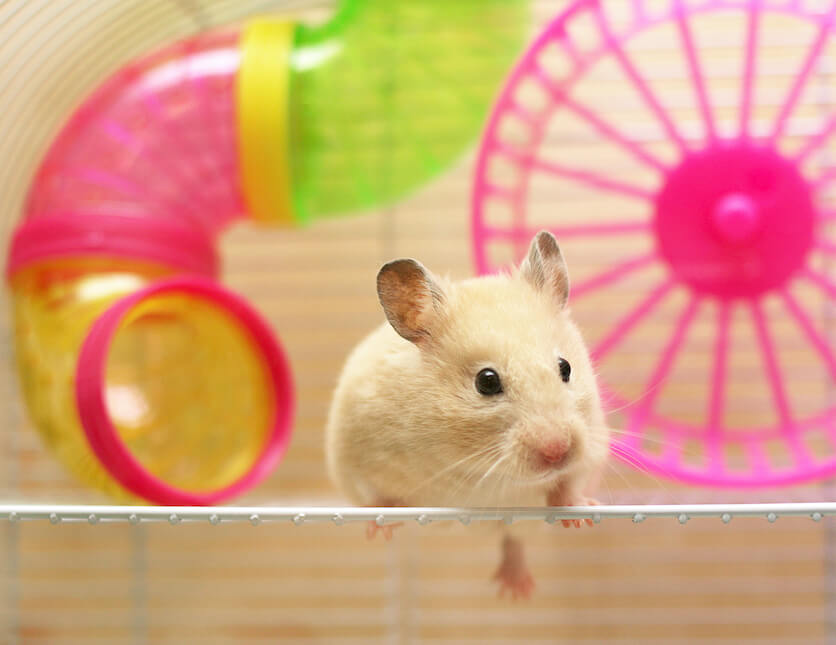
Tubes and tunnel systems also satisfy a hamster’s natural burrowing and tunneling instinct. In the wild, they build tunnel systems under the ground where they have burrows to nest in and store food in. While most pet hamsters have a wheel inside their cage, adding a tube/tunnel system opens a whole new world for them that makes them happy and never bored.
Tube systems must always be monitored for excrement and be cleaned immediately to prevent your hamster from tracking through it. This is where close supervision comes in again.
The number one downside to a tube system is poor ventilation. Tubes either come without ventilation vents, or the vents are very small. Should the area where the cage/tube system is placed be warm or in the sun, your hamster can become overheated in the tube.
Types Of Hamster Tubes
Alright, let’s dig in and get to the good stuff! There’s a whole lot to explore, and as you can guess, we have saved the best for last!
Cellulose Hamster Tunnel System
If you’re looking for a planet-friendly option in a tube/tunnel system, this fits the bill. It is made of cardboard and coated with timothy hay, calendula petals, and barley grass powders. For hammies that like to chew, this system is safe for chewers.
Pros and Cons
| Pros | Cons |
|
|
Cost $
DIY Repurposed Material Hamster Tubes
Hamster parents put their ingenuity skills to task repurposing everyday household items to build tube systems. We have seen everything from water bottles, paper towel rolls, dryer vent rolls to PVC piping. Sometimes a cheaper alternative may not be as safe as you think.
Pros and Cons
| Pros | Cons |
|
|
Cost $-$$
Hamster Cage Tubes
Can you attach tubes to a hamster cage? Unless a cage comes outfitted with tubes and exterior connectivity, the only way to attach tubes to a cage is to modify the cage. Some hamster parents have used wire cutters to remove a section of the cage to connect a tube to. The best option for a cage with tubes is to purchase one. Not only is it safer for the hamster, but less of a headache for you.
Pros and Cons
| Pros | Cons |
|
|
Cost $$-$$$
DIY: Complex and Unique
We now come to the tube/tunnel system we have been excited to share with you! Hamster owners carefully design and install a hamster tube/tunnel system to scale an entire room vertically and horizontally. This is not a cost-effective system and is designed based on a specific preference a hamster parent has in mind.
One hamster dad put his carpentry skills to use by installing tubes that lead from the cage up to the ceiling and around the walls. This rodent mega highway is elaborate.
Pros and Cons
| Pros | Cons |
|
|
Cost: $$$
So, how do you know which tube systems are best?
How To Choose The Best Hamster Tubes
We all love our hammies and only want the best, so skimping on a tube system isn’t something anyone wants to do. There are many different types of tubes on the market. Some hamster parents have taken their creativity to an all-new level in designing systems that will blow your mind.
Things To Consider When Choosing A Hamster Tube Or Hamster Tunnel System
So, let’s look at a few things that you’ll need to think about before purchasing a tube/tunnel system.
Size
Curvaceous hamsters with a few extra pounds on their bones may find getting through tubes a bit challenging and can even get stuck. The average hamster tube does not feature “plus sizes.” You can expect to comfortably fit dwarf hamsters and a lean Syrian hamster in one. Tubes/tunnel systems on the market are about 2″ wide in diameter. When in doubt, measure your hamster to see how wide they are (at their widest point.)
Ease In Cleaning
Most tubes are made of plastic and come in detachable sections that make cleaning easy. However, the longer a section of a tube, the harder it will be to clean. Likewise, cellulose/cardboard tubes will absorb excrement, causing them to become soiled and smelly.
Placement
A very simple tube system doesn’t require much space. However, if you want to get creative as most hamster parents do, be sure you have the space to accommodate it. Never place your hamster tubes in the sun, near air vents or heaters, or in an area that you are unable to supervise or get to them.
Monitoring
You should be able to see your hamster in the tubes at all times. This is why we don’t recommend tubes/tunnels that are not clear. Not only do you need to ensure your hammie isn’t stuck in the tube but not tracking through excrement.
Can Syrian Hamsters Get Stuck In Tubes?
Syrians (Golden, Teddy Bear) are the largest hamster species. These little guys are about the size of a guinea pig. Those who like to indulge their hammies with extra treats and food find that their Syrian may be a bit too plump to maneuver their way through tubes.
How Much Does A Hamster Tunnel Cost?
There are hamster tube/tunnel systems for almost every budget. Depending on how elaborate you want to get, your expense increases the more you build. Tube/tunnel systems start at about $15 (USD) for a cheap hamster tube and can go well into the hundreds. The more tubes you buy, the more it costs.
What Is A Hamster Tunnel Cage Layover Station?
Hamster layover stations are also known as burrows. These little places to rest are typically connected midway in a tube/tunnel system. You may find that your hammie uses these burrows to store food in, and as it gets hungry, it will travel through the tubes to the layover/burrow to feed.
Worthy Of Purchasing
A tube/tunnel system is certainly a noteworthy accessory your hamster will enjoy. Should you choose to install one, supervision is a must. You may find that watching your hamster frolic along in these tubes is better than TV!
